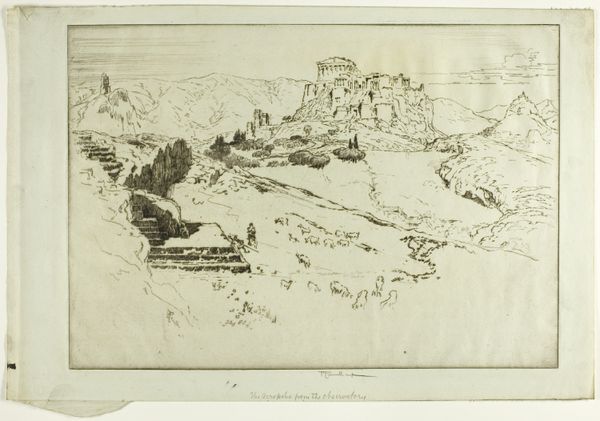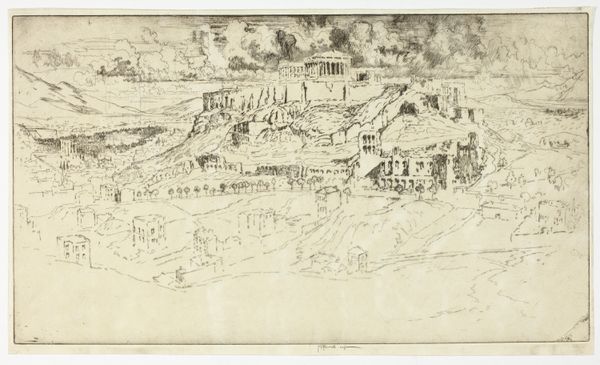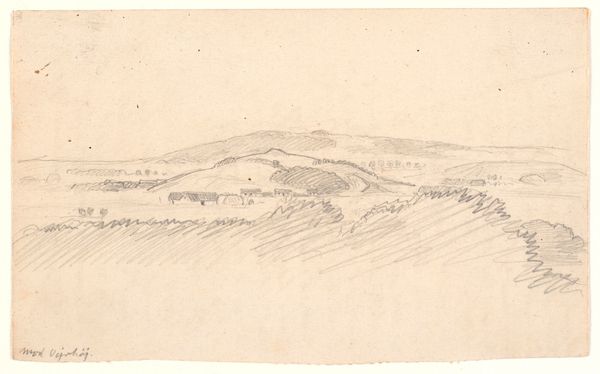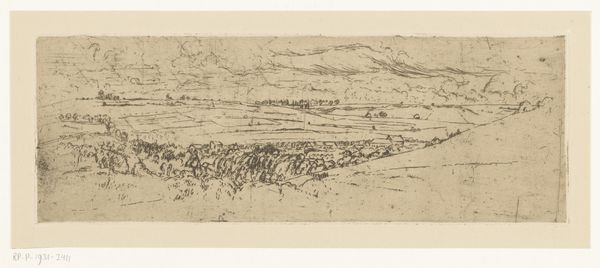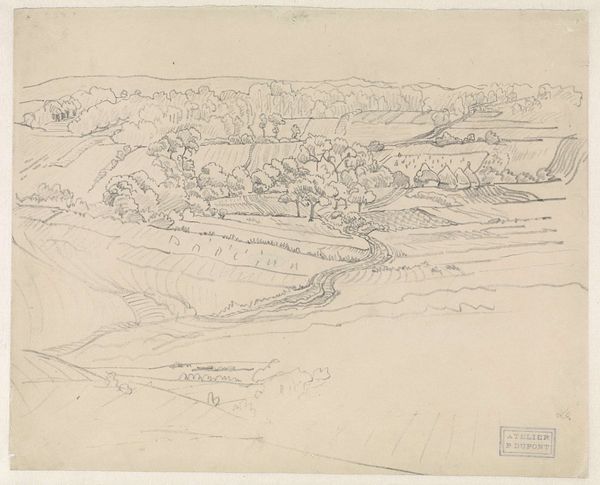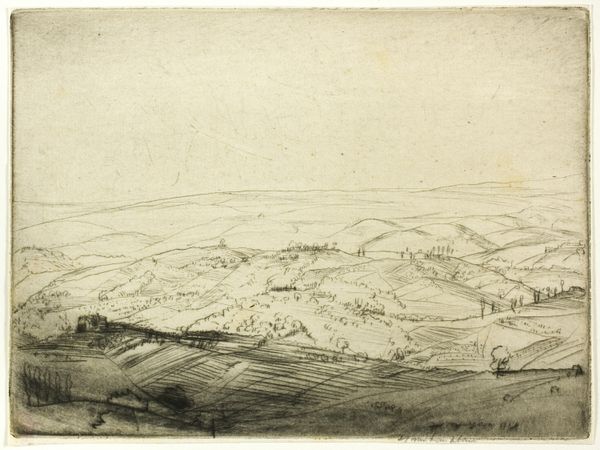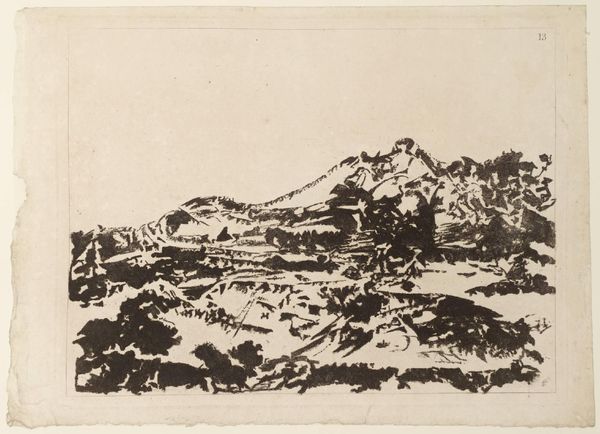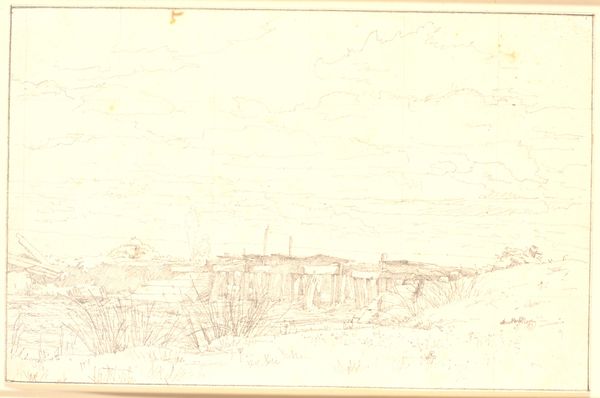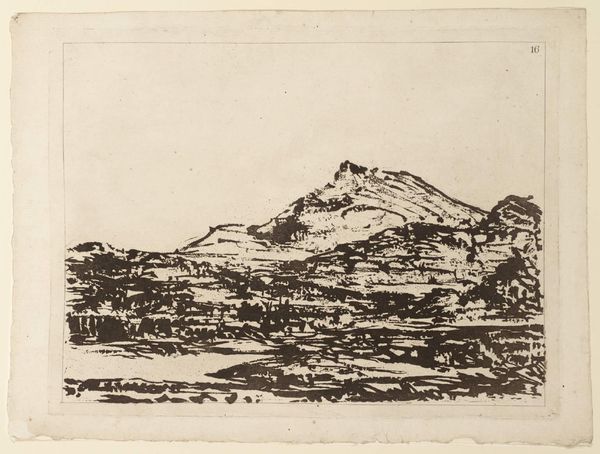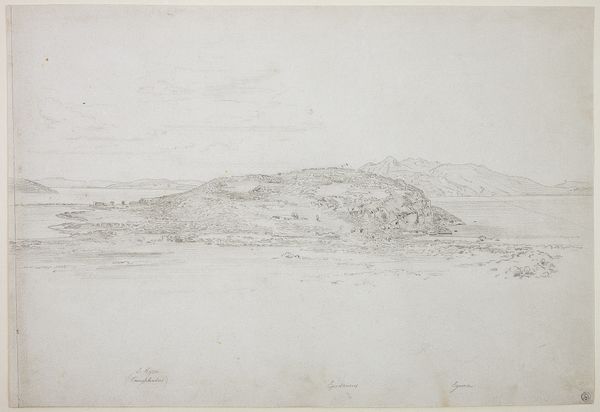
Dimensions: 264 × 380 mm (image); 296 × 440 mm (sheet)
Copyright: Public Domain
Curator: Looking at "Girgenti, the Temple on the Wall" by Joseph Pennell, an etching created in 1913, I feel immediately drawn to its quiet solemnity. There's a muted quality to it, like a memory half-forgotten, seen through layers of time and atmosphere. What are your initial impressions? Editor: It's a landscape clinging to classicism. See how the temple dominates? Temples often represent a society's core beliefs and values. So here, the art silently echoes grand ideals but, it also highlights how civilizations can be physically worn away—the sketchy lines remind us time is the ultimate vandal. Curator: Yes! Pennell captured something enduring. Using graphite on paper to define ancient architecture in soft light is itself a study in contrast. I find a distinct melancholy here. The piece resonates like an elegy to faded empires. Editor: Elegies are interesting because we perform them ritually as we revisit these ruins again and again, hoping to glimpse something essential. What does this temple communicate beyond architecture? Look closely. The eroded rockface almost merges into the temple's foundations. This is less about pure Neoclassicism and more about impermanence, I feel. Curator: Precisely! Perhaps the temple stands for more than bygone culture, and acts as a commentary on how quickly culture erodes. There’s a small band of figures at the top right, barely visible and seemingly in deep discussion; maybe they also express a longing, maybe they represent hope. They do something for the scene, giving scale, perhaps illustrating time’s great march onward? Editor: The small figures are more than spatial reference; they are wanderers—observers who, in encountering what remains, come to understand a new symbol—a personal relationship to ruin and a potential symbol for what culture, society, or religion could be in their lives. Even an intimate etching on paper holds layers and echoes, doesn't it? Curator: Indeed, a quiet observation, transformed into a statement echoing across time. What began as an etching transforms for each viewer to become a testament, not just to a location, but the complex relationship between humanity and its own story.
Comments
No comments
Be the first to comment and join the conversation on the ultimate creative platform.
